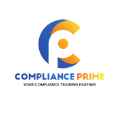So, if you are a landlord in California then you may have heard section 8 in california which is given to people who can’t afford rent because their income is low and with that income they can’t afford the rent. The aim of this section 8 which is a federal housing program to provide help to people so that they get the help which makes the rent affordable with their current low income.
In this program the government directly pays a part of the rent to the landlord and the tenant pays the rest which is an amount which they can afford with their current income. This program is run by local public housing authorities which works with the government to make the housing available and affordable to everyone so that people can get their dream home.
To help landlords and property managers we have written a guide on section 8 in california to tell how it really works and what should landlords or property managers should do so they do things correctly.



Many property owners first encounter Section 8 requirements during HUD inspections, where the local housing authority ensures units meet safety and habitability standards before approving them for the program.
How It Works for Landlords
1. Tenant applies for Section 8: The process starts from the tenant. They apply for Section 8 through their local Public Housing Authority (PHA). If they are approved, they receive a Housing Choice Voucher. This voucher basically means that the government will help them pay a part of their rent every month. Once they get the voucher, they can look for a home or apartment where the landlord is willing to accept Section 8.
2. Landlord agrees to participate: If you are a landlord, it’s completely your choice whether you want to accept Section 8 tenants or not. If you decide to go ahead, then you have to sign a contract with the PHA. This contract clearly mentions things like the rent limit, the inspection process, and how much rent will be paid by the government and by the tenant.
3. Property inspection: Before the tenant can move in, the PHA will send someone to inspect your property. The inspection is to make sure that the house or apartment is safe and in good condition. They check things like working plumbing, electricity, heating, proper locks, and that there are no safety hazards like exposed wires. Once your property passes the inspection, you can rent it out under the program.
4. Rent payment process: After everything is approved, the tenant moves in. The government (through the PHA) starts paying their portion of the rent directly to you every month. The tenant will pay the remaining portion. The best part is that the government’s payment is usually very reliable, so you don’t have to worry about late or missed rent for that portion.
5. Ongoing rules and re-inspections: Each year, you can request a rent increase, but it has to be approved by the PHA to make sure it’s reasonable. The property can also be re-inspected from time to time to confirm it still meets the housing standards. So keeping your property in good shape is always a good idea.
Benefits for Landlords
- Reliable rent payments: The government pays its part on time every month, which gives you steady income and less stress.
- More tenant options: You get access to a large pool of tenants who are already approved for the program.
- Faster occupancy: In many areas, Section 8 tenants are looking for homes all the time, which helps you fill your vacancies faster.
- Helping your community: You’re providing housing to families who truly need it, and that makes a real difference.
Many property owners first encounter Section 8 requirements during HUD inspections, where the local housing authority ensures units meet safety and habitability standards before approving them for the program.
Benefits for Tenants
- Affordable rent: They can finally live in a decent home without spending most of their income on rent.
- Better living conditions: They get a chance to live in safer and better neighborhoods.
- Stability for their families: It helps them stay in one place longer without the constant worry of rent increases they can’t afford.
The Challenges
While Section 8 can be a good deal for landlords, there are some things to keep in mind.
- Inspections and rules: Your property needs to pass inspections and follow certain standards. It’s not hard, but it does take time and attention.
- Rent limits: You can’t just charge whatever rent you want. The PHA sets a limit based on the local area’s average rent.
- Paperwork and delays: Since it’s a government program, the process can be slower than private rentals, and there’s always some paperwork involved.
- Tenant management: Like any rental, you may still face issues with tenants. Section 8 doesn’t guarantee perfect renters, but the same goes for any tenant.
For guidance on handling difficult tenants and maintaining professionalism, landlords can review How to Deal with Difficult Residents, a helpful read for balancing compliance with effective tenant management.
Maintaining Compliance with Section 8: What Landlords Should and Shouldn’t Do
Every property that participates must stay compliant with PHA and HUD requirements. If your unit fails repeated inspections or doesn’t meet ongoing standards, it can be suspended or removed from the program. That means you’d stop receiving government payments until the issues are fixed, or, in some cases, the contract could be terminated entirely.
1. No discrimination in renting or advertising
You cannot refuse to rent to someone just because they have a Section 8 voucher. The same goes for your listings, you can’t write “No Section 8” or anything that discourages voucher holders. Fair housing laws apply here, and breaking them can lead to penalties or being removed from the program.
2. Keep your property in safe and livable condition
Make sure plumbing, electricity, heating, and smoke detectors are always working. The unit should stay in good repair, clean, and safe. Even small problems, like leaks or broken locks, can cause your property to fail inspection and lose eligibility.
3. Report any changes on time
If the tenant moves out, the rent changes, or the property ownership changes, you must notify the PHA immediately. Delaying or hiding information can lead to suspension or cancellation of your contract.
4. Use proper leases and contracts
Only use the lease and Housing Assistance Payment (HAP) contract approved by the PHA. Don’t make separate or side agreements with tenants for extra charges, fees, or rent outside what the PHA has approved. That’s a major compliance violation.
5. Respect tenant rights
Treat Section 8 tenants the same way you treat any other tenant. Follow the same eviction process required by state law, and always give proper notice. Any form of harassment, unfair treatment, or discrimination can get you removed from the program.
6. Allow inspections and cooperate with the PHA
When the PHA schedules an inspection or asks for documents, respond on time. Denying access, delaying, or refusing communication will be marked as non-compliance.
7. Don’t collect double rent
You can’t take full rent from the tenant and the PHA. The tenant only pays their assigned portion, and the rest comes from the PHA. Taking more than what’s approved can lead to termination and even legal trouble.
8. Keep all records organized
Save your lease agreements, inspection reports, payment records, and communication with the PHA. If there’s ever a compliance check, having everything documented will protect you.
Learn and Stay Compliant
If you want to learn more about compliance and related topics, like affordable housing, HUD regulations, fair housing, tenant rights, and landlord rights, you should check out our fair housing webinars. These sessions are led by expert speakers who explain the latest laws and regulations and show you how to stay on the right side of compliance.
Final Thoughts
Navigating Section 8 in California doesn’t have to be complicated, but it does require understanding the rules and staying organized. For landlords, it’s a way to secure steady, reliable rent while providing housing to families who truly need it. Compliance is key, keeping your property safe, following the PHA’s rules, and respecting tenant rights ensures you can continue participating without issues.
By staying informed and proactive, you can make Section 8 work for your rental business while contributing to your community. For those who want to go deeper, attending fair housing webinars or connecting with local PHAs can give you the latest updates and practical guidance to manage your property confidently and correctly.


